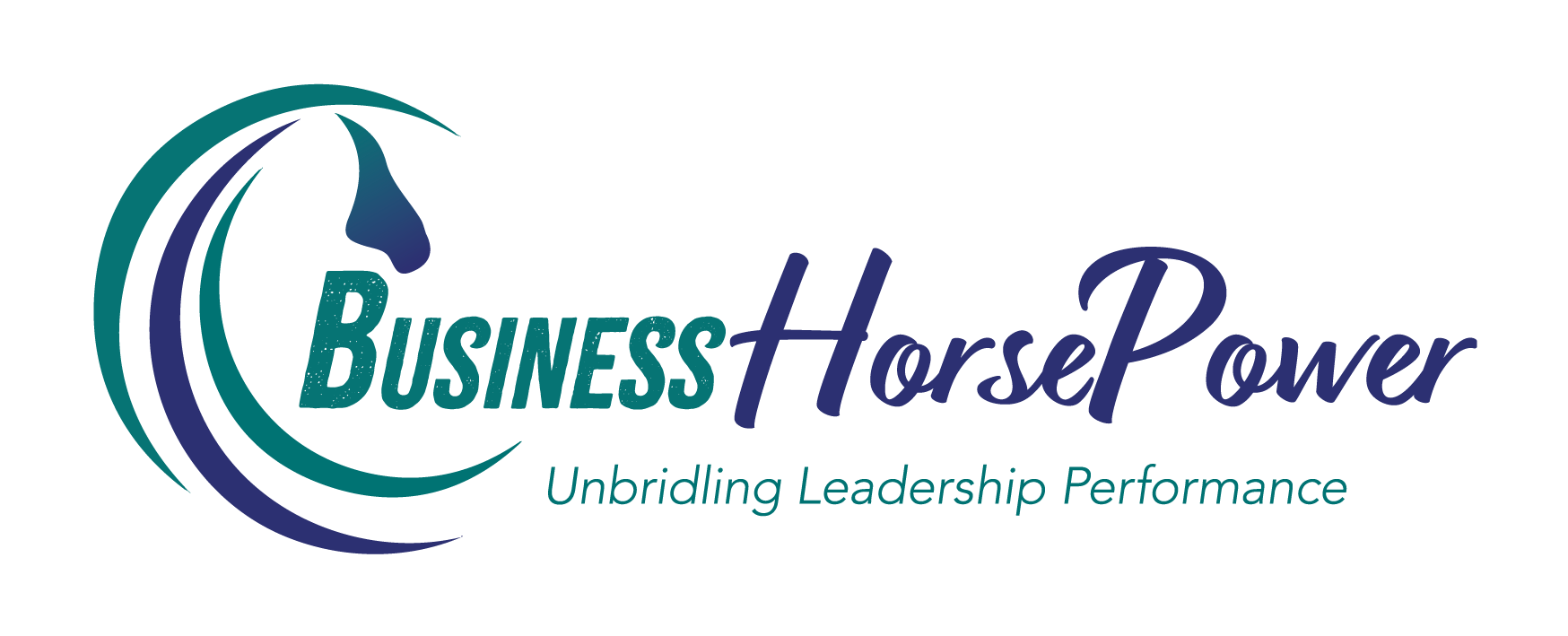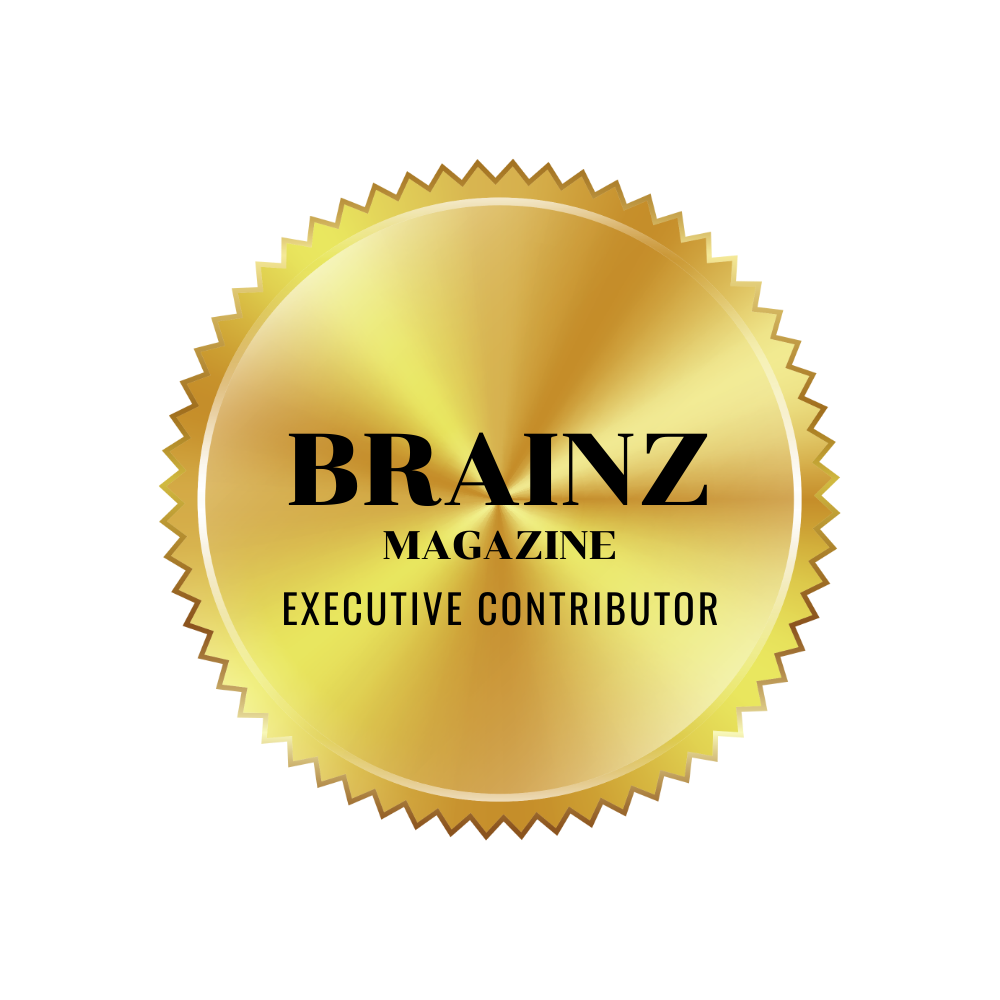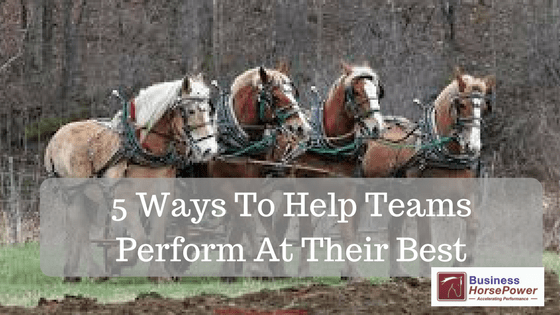
by Julia Felton | Aug 23, 2017
I hope you have been having a great summer. It’s been an interesting time here at Business HorsePower because the weather has tried to play havoc with some of my events. Like two weeks ago when I was running an evening event for 18 local business leaders.
A week before the event someone asked what we would do if it rained. Well I had never even considered that outcome. I’ve always held my events in our main outdoor arena, as quite frankly my small covered, round pen does not have the space to accommodate those numbers. And guess what. Just on cue it rained continuously all day.
Not unsurprisingly I had many calls from the attendees asking if the event was going ahead. To be honest I did consider postponing the event, but then I thought, I need to model what I teach, which is being agile and leading through uncertainty. So with the help of some colleagues I got inventive and created seating and standing space around the round pen for 18 delegates with straw bales and horse rugs.
My horse team stepped up to the mark and delivered some amazing insights to my clients on how to deliver peak performance in what were challenging circumstances.
So this got me thinking and researching the latest scientific research on what really drives performance, and discovered the conditions necessary for teams to perform at their best.
- Find the purpose. People are more motivated when they can see why their work matters. That doesn’t mean every job needs a ‘worthy’ cause; whether it’s contributing to the team’s success or seeing others grow, help them find a reason to be proud.
- Make it difficult. No pain, no gain so the saying goes – while people may think they’ll be happier cruising, research shows that we’re happiest, and perform best, when tasks stretch us to the edge of our capabilities. So set the bar high.
- Pay attention. Knowing that someone will notice – and care – how they’re performing pushes people to improve. Observe your team in action and offer regular, informal feedback on what they’re doing well and how they could get better.
- Recognise growth. Feeling appreciated for who you are and being fairly recognised for great performance makes it worth the effort. That doesn’t mean big financial rewards; a personally motivating token of thanks goes a long way.
- Keep talking. A recent study tracked the financial performance of 40 companies. 63% of high-growth businesses reviewed employee performance more than annually, compared to 22% of those whose growth was low. Regular conversations are key to driving performance.
So are you using these high performance strategies in your business?. Even if you don’t employ team members you can use these strategies to engage your suppliers and customers.
Julia Felton (aka The Business Wrangler) is the founder of Business HorsePower. Business leaders, entrepreneurs and executives hire her to accelerate their business performance by harnessing the energy of their people to work more collaboratively together. By aligning purpose with actions the team achieves exponential results as everyone starts pulling in the same direction.
Julia believes that business is a force for good and through designing purpose-driven businesses that leverage the laws of nature, and the herd, you can create businesses founded on the principles of connection, collaboration and community that make a significant impact in the world.

by Julia Felton | Aug 9, 2017
“Proper Planning Prevents Poor Performance”
If you ask many business owners and leaders what creates success many will allude to the fact that planning is key, but this is just one of the 5 P’s of business success. Instinctively, many business owners also understand the concept of alignment but what does this really mean. In my conversations with my clients they usually give one of the following definitions.
- “our core purpose, values and mission are aligned with our goals” or
- “our people understand our values and are aligned with our purpose.”
However, having an aligned business is much more complex than this. Its not just about purpose and people, although that is a great start. You need to ensure you have aligned the other P’s too. This is an area that far too many businesses overlook and yet it can have a massive impact on the ultimate success of the business.
So what are the 5 P’s that impact business today – and these are not the traditional 5 Marketing P’s espoused by Philip Kotler of product, price, place, promotion and people, but rather:
- Purpose
- Plans
- People
- Processes
- Playground
Purpose: Few people will argue that having a clear purpose is imperative to a businesses’ success, but now more than ever team members and consumers are demanding that companies start walking the talk and recognise the impact they are having on the environment.
In a recent study by Cone Communications 70% of people consider the social and environmental impact when deciding where to work and 83% of millennials said they would be more loyal and work harder for a purpose driven organisation that is making a real difference in the world and where they feel they are making a contribution. Furthermore 87% of US consumers said they would rather purchase a product because a company advocated for an issue they cared about.
You can take the purpose test here to find out which of the 17 Sustainable Development Goals you are most closely aligned with
Plans: Having a great purpose that inspires and motivates is just the first step. This purpose then has to be translated into a vision, values and strategy that the entire team can get behind. The purpose will shape the strategy ensuring that the business only pursues activities that align and are congruent with its purpose.
A great example of this is Larry Merlo, the President and CEO of CVS Caremark, a chain of US pharmacy stores, who took the bold decision in 2014 to end the sale of cigarettes in more than 7,600 stores as the sale of tobacco products was inconsistent with the company’s purpose of helping people on their path to better health.
People: Richard Branson, Zappos, Unilever and Whole Foods are examples of companies that have made a solid commitment to focus on their purpose, and ensure that through hiring people for attitude rather than competence that they create a culture where the entire team is aligned with the values of the company. Zappos hold the mantra of Hire Slow, Fire Fast as they recognise that if a team member is not committed to their organisation they can be divisi, so the company would rather pay that team members a month’s salary to leave, rather then experience the problems that ensue from disgruntled and dis-engaged team members.
The people agenda, when not fully congruent, can derail the best strategic alignment plan. Do all the touch points of training – hiring, on-boarding, training, leadership development, continuing education – enable your company to fully achieve your goals? Are there areas where this is shortchanged? Will the full execution of your training plan realise your company mission?
Processes: In today’s VUCA world it is essential that business can act in an agile manner. This means that systems and processes need to be flexible to adapt to the myriad of changing situations that leaders and team members find themselves in.
Leaders need to ensure that the work processes and flowcharts are tied into the company purpose? For example, if your company wants to give the best customer experience, is every customer interaction streamlined, or are they bogged down with layers of checks and balances that hinder this goal? Check each and every process constantly to ensure that it works optimally like a well-oiled machine, and supports the team in achieving their goals, rather than hindering the process.
Playground: Playground is the term I use for the internal business environment made up of both the physical space and also the business culture. Do both of these aspects support the growth of the business aligned to its purpose? Is the culture in the business one of blame or do team members take responsibility and are they encouraged to make decisions?. In my experience when team members are working in fear of the consequences of what they do they fail to step up, take decisions and generally abdicate responsibility for what is happening. This can lead to silo group forming who consciously or unconsciously seek to derail the business for their own personal gain.
Getting all these 5 P’s aligned and congruent is imperative for the success for the business, and whilst when one or two are off a bit, the business can still flourish, it is my experience that a business never fully gets into flow until alignment has occurred in all these areas.
Take the analogy of driving a car. You can drive it when one or two of the wheels are misaligned, but the drive is not as smooth, it takes more effort and you use up more gasoline making driving the drive more expensive, both now and in the future.
There are considerable benefits of creating an aligned organisation, as you create a business where no time, energy or resources are wasted. And the result to the business are the 3 P’s of successful alignment:
- Performance
- Productivity
- Profitability
and what business would not want to achieve that.
I encourage you to examine what areas of your businesses are mis-aligned and not supporting your company purpose, and then work on bringing them back into alignment.
And of course if you need any assistance please feel free to connect with me and lets have a conversation to explore what is possible for your business because the result of creating an aligned business is considerable and will help your business stand out above the rest.
Julia Felton (aka The Business Wrangler) is the founder of Business HorsePower. Business leaders, entrepreneurs and executives hire her to accelerate their business performance by harnessing the energy of their people to work more collaboratively together. By aligning purpose with actions the team achieves exponential results as everyone starts pulling in the same direction.
Julia believes that business is a force for good and through designing purpose-driven businesses that leverage the laws of nature, and the herd, you can create businesses founded on the principles of connection, collaboration and community that make a significant impact in the world.

by Julia Felton | Aug 2, 2017
The thing I love about summer is the weather and the fact that all the plants and flowers bloom. It makes gardens look amazing and the good weather also means all the fields that I can see from my office window are green and verdant. Nature understands the seasons and that now is the time to start stocking up for winter. Animals start eating more so they have more body fat to keep them going through the winter. And my horses are no exception. The poor girls – Bracken and Thistle – only have to look at a blade of grass and they pile on the weight, whereas with the boys – Toby and Charlie – it is a slower process.
Regardless, the challenge is that as they eat more they also create more manure, which means I have more to clear out of their field each day. Currently I have to clear two barrowloads for manure every 24 hours. Given that the horses are currently living on a steep hill, and love to be at the bottom of the hill, my abs are getting a great workout each day, as I push these full barrows of manure up the hill.
So what does horse manure have to do with business?. Actually quite a lot it seems because the The Great Horse Manure Crisis of 1894 was the first big global urban crisis that the world’s largest cities faced in modern times.
By the late 1800’s London had over 50,000 horses moving cabs and buses every day. Each one produced 15 to 35 pounds of manure and 2 pints of urine daily. At the same time, New York had over 100,000 horses producing 2.5 million pounds of manure each day. No one could figure out how to handle all this manure, and in 1894 the Times newspaper predicted based on the increase in population and horses at the time “In 50 years, every street in London will be buried under nine feet of manure.”
The crisis led to the very first International Urban Planning Conference in New York. However, it was abandoned after three days – instead of the scheduled ten – because none of the delegates could see any solution.
Many of today’s challenges look similarly insurmountable. Anyone looking at current trends and trying to battle the inertia, outdated policies or plain bad decisions of many bureaucracies, corporations and governments can easily lose hope
So what happened to end the Great Horse Manure Crisis of 1894?
Within a matter of years, the entire crisis simply disappeared. While officials looked unsuccessfully for solutions, Karl Benz, Gottlieb Daimler and other inventors and entrepreneurs were creating the very first automobiles. They were looking outside the box at solutions that the urban planners could not even consider possible. After all who would have thought that cars would replace horses. That was such a preposterous idea.
Yet, by 1912, there were more cars than horses in London and New York, as it was cheaper to own a motor vehicle than a horse-drawn carriage and economics eventually ensured that horses were no longer central to the urban transport equation. In just over a decade the number of cars sold in the US rose from 4,192 per year in 1900 to 356,000 in 1912. By 1917, the last horse-drawn streetcar in New York had been retired. What was once thought to be an insurmountable threat to humanity’s existence vanished in little over a decade and the entire incident is now a barely remembered footnote in human history
“We can’t solve problems by using the same kind of thinking we used when we created them.” ~ Albert Einstein
Of course – the age of fuel-driven vehicles has created a whole new set of problems. But today, new inventors and entrepreneurs in green energy, health, education and all areas of society are coming up with new solutions at an increasingly rapid rate. In fact the biggest challenge for business today are the mavericks who are thinking outside the box and disrupting business. Just think Uber and Air BnB. Who would have thought that these two companies could completely change the face of the travel industry – and best of all they have done it without owning any assets!
There is no getting away from the fact the business is at a tipping point. The old structures are no longer serving us and as a business owner and leader you can either decide to focus at joining the groups protesting them or you can join the many who are already creating the new paradigms and be the change you want to see in the world.
What are you deciding? Will you become a conscious entrepreneur who challenges the status quo and stands for something more, or will you shrink and play small, staying stuck in the old ways of doing things. If the former, I’d love to hear from you as I specialise in helping leaders set out of their comfort zone to challenge the status quo and in doing so become a business pioneer.
Julia Felton (aka The Business Wrangler) is the founder of Business HorsePower. Business leaders, entrepreneurs and executives hire her to accelerate their business performance by harnessing the energy of their people to work more collaboratively together. By aligning purpose with actions the team achieves exponential results as everyone starts pulling in the same direction.
Julia believes that business is a force for good and through designing purpose-driven businesses that leverage the laws of nature, and the herd, you can create businesses founded on the principles of connection, collaboration and community that make a significant impact in the world.
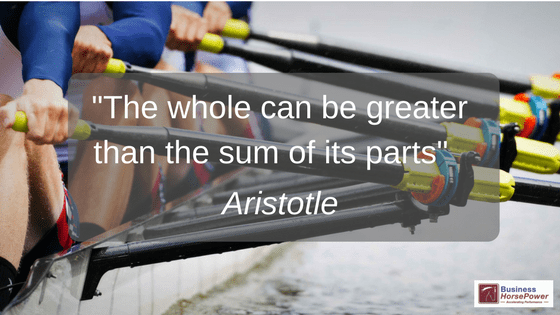
by Julia Felton | Jul 26, 2017
How come some teams are successful and others aren’t? I’m sure we’ve all been in teams that work well and other teams that don’t, and if you’re like me being in a dysfunctional team is super frustrating. So what are the traits of high performance teams and how do we ensure that any team we are part of adopts these traits.
Google was inspired to conduct some research to codify the secrets of team effectiveness and to examine why some teams excelled whilst others fell behind, and what they discovered surprised them. .
Before this study, like many other organisations, Google Execs believed that building the best teams meant compiling the best people. It makes sense. The best engineer plus an MBA, throw in a PhD, and there you have it. The perfect team, right? However, in the words of Julia Rozovsky, Google’s people analytics manager, “We were dead wrong.”
Eager to find the perfect mixture of skills, backgrounds, and traits to engineer super-teams, Google put together a team of statisticians, organisational psychologists, sociologists, engineers, and researchers to help solve the puzzle. Over a two year period they studied 180 Google teams, conduct 200-plus interviews, and analysed over 250 different team attributes. However, at the end they still had no clear pattern of characteristics that could be plugged into a dream-team generating algorithm.
This is because they initially failed to consider the behaviours of the group and how that impacted the collective intelligence of the team. It seems that the dynamic of how the team moves through the cycle of form – storm – norm – perform is pivotal to the ultimate success of the team.
I’m sure you’ve heard the quote by Aristotle, “The whole can be greater than the sum of its parts” and intuitively we all know that two heads are better than one but it is how these two heads collaborate and inter-act together that determines the success of the group. Great teamwork is not based on individual brilliance but rather on the dynamic and relationships that exist between the team members.
So here are the five traits of a high performing team that Google eventually identified:
- Dependability – Team members get things done on time and meet expectations.
- Structure and clarity – High-performing teams have clear goals, and have well-defined roles within the group.
- Meaning – The work has personal significance to each member.
- Impact – The group believes their work is purposeful and positively impacts the greater good.
- Psychological Safety – An environment where opinions are listened to and team members feel heard
I’m sure we’ve all been in meetings and, due to the fear of seeming incompetent, have held back questions or ideas. I know I have. It’s unnerving to feel like you’re in an environment where everything you do or say is under a microscope. But imagine a different setting, a situation in which every team member feels safe to take risks, voice their opinions, and ask judgment-free questions. A culture where managers provide air cover and create safe zones so team members can let down their guard. That’s psychological safety.
Reviewing these five traits we can see that team success is as much to do with the team dynamics and the business culture as with individual skill sets. In an age where teamwork is becoming increasingly important to respond to the uncertain world in which we live, the need to hire team members that are a good cultural and values fit is essential. Just imagine the impact of having someone in your team who is not aligned with the other team members. Not only do they feel uncomfortable but they also impact the harmony of the group, and in the worst situation can negatively impact the entire team. John Maxwell refers to this as the “law of the bad apple” and if not dealt with swiftly can cause silo mentality to develop within the team.
It is also interesting to note that the research highlighted that high performance teams feel like they are making an impact. In other words the team is purpose-driven. They exist to create an impact that this bigger then themselves and have some broader influence on the world. Increasingly, I am coming across more and more people who are more consciously aware of their impact and want to be part of something that is making a difference in the world. After all, in many ways we all want to make a contribution and be in service to others, as that just fulfils one of our basic human needs.
What contribution do you want to make and how does that impact how you show up in a team? If you’d like to explore what your purpose is and how you can make a real difference in the world, then let’s have a powerful conversation, as I know when I unlocked my purpose it made a massive difference to my own self-worth and business success.
Julia Felton (aka The Business Wrangler) is the founder of Business HorsePower. Business leaders, entrepreneurs and executives hire her to accelerate their business performance by harnessing the energy of their people to work more collaboratively together. By aligning purpose with actions the team achieves exponential results as everyone starts pulling in the same direction.
Julia believes that business is a force for good and through designing purpose-driven businesses that leverage the laws of nature, and the herd, you can create businesses founded on the principles of connection, collaboration and community that make a significant impact in the world.

by Julia Felton | Jul 19, 2017
How to have powerful conversations is a real challenge in business. And this cartoon that I came across on LinkedIn recently shows you exactly why. Both people are right and cannot understand why the other can’t see it. Can you relate to that?. Being certain that something is correct when your colleague is adamant that it isn’t.
I know I have been in this situation on more than one occasion. When this happens it is easy for the situation to escalate out of control with both parties believing that they are right, because after all they are. The only solution in these situations is to step into the other person’s shoes and to see things how they see them. Only then you will realise that they are also right and the confusion is coming from the fact that you are both seeing different things.
Now of course as readers and observers to this situation we can easily see the problem that these two people have, as we are in the position to see the challenge through yet another lens. Yes, that’s right there are always three positions of perspective to any situation. These are:
In this situation the man on the left hand side of the page is seeing the world through his lens and that means that the number is 6. If the man stepped across the page and stepped into the shoes of the man on the right hand side of the page, he would see that the number is 9. And finally if the man stepped away from the situation and looked back, he would clearly see, as we do, that both men are right but it is just how they are viewing the situation that is causing the confusion.
Armed with this information, the two men can now have a powerful conversation, in a calmer manner, as they can appreciate the different perspectives on what is happening. The man on the left is able to appreciate the folly of his insight and so make a much better decision.
These three positions of perspective can be used anytime you have to have a difficult conversation with someone, or if you have to make a difficult decision. What I love to do is to put three peices of paper on the floor. Then one by one I stand on each peice of paper and reflect on how I am feeling in that space. How does the situation change when I view it from a different perspective. It is amazing what insight you can get into other people’s intentions and feelings when you do this.
I remember the first time I used this model was when I was deciding what to do about my racehorse Charlie. My three month loan period was fast approaching and I had to make a decision about whether I wanted to buy him. Although I wanted to, I knew he also had some underlying lameness problems which we hadn’t got to the bottom of, and given I already had one lame horse I didn’t want another one. So from my perspective the only option was give him back. However, when I stepped into the position of Other I realised that the owner was happy not to have the responsibility and upkeep for Charlie, so they didn’t really want him back. Finally, when I looked at the situation through the lens of the observer I realised another solution existed and that the owner might just consider extending the loan for another 3-6 months. Armed with all these different insights I was now able to make a much more informed decision about how to proceed.
And as many of you know, Charlie stayed with me and eventually, some six months later I brought him for £1. That was something I could have never imagined would be possible initially.
So what opportunities are available to you right now, if you could just look at them from another perspective? There are probably a lot more than you ever imagined.
The Art of Authentic Communication
If you enjoyed this post then I know you will enjoy the Art of Authentic Communication workshop I am running this Friday 21st July, along with the horses. There are still a few places left if you want to come along. During this experiential workshop will learn how to:
- Use the three diferent dimensions of communication
- Engage in listening and communicating more effectively
- Mediate discussions amongst team members
- Gain an insight into different personality types and their preferred method of communication
- Become more assertive
- Use your body language as a tool for communication
- The importance of non-verbal communication
- Influence team members and inspire them to follow you.
To book in simply click here. I can’t wait to share all this great information with you, as I know that mastering the art of authentic communication can seriously improve your life and business.
Julia Felton (aka The Business Wrangler) is the founder of Business HorsePower. Business leaders, entrepreneurs and executives hire her to accelerate their business performance by harnessing the energy of their people to work more collaboratively together. By aligning purpose with actions the team achieves exponential results as everyone starts pulling in the same direction.
Julia believes that business is a force for good and through designing purpose-driven businesses that leverage the laws of nature, and the herd, you can create businesses founded on the principles of connection, collaboration and community that make a significant impact in the world.

by Julia Felton | Jul 12, 2017
Are you ready to break free?
Today I wanted to share the words of Natasha Bedingfield’s song called Wild Horses.
These words really resonate with me right now and I know that often many of my clients feel trapped in their lives and wish they could be free.
The great news is that we all the have ability to Grab The Reins and Lead Our Life, so if you are feeling stuck right now register for one of limited number of complimentary discovery sessions I offer each month.
During our call you will:
- Uncover hidden opportunities to create more income in your business
- Discover how you may be unconsciously sabotaging your business and its success and break through those limitations
- Create a clear plan that describes in detail the steps you need to unleash the hidden potential in your business
- The one simple step you can take immediately to get into action
Click the link here to register for one of the limited number of complimentary discovery sessions.
Ooooh I feel these four walls closing in
Face up against the glass
I’m looking out, hmmm
Is this my life I’m wondering
It happened so fast
How do I turn this thing around
Is this the bed I chose to make
It’s greener pastures I’m thinking about
Hmm, wide open spaces far away
All I want is the wind in my hair
To face the fear but not feel scared
Ooh, wild horses I want to be like you
Throwing caution to the wind,
I’ll run free too
Wish I could recklessly love like I’m longing to
I want to run with the wild horses
Run with the wild horses, oh Yeah, oh oh, ye-yeah
I see the girl I want to be
Riding bare-back, care-free
Along the shore
If only that someone was me
Jumping head-first, head-long
Without a thought
To act and down the consequence
How I wish it could be that easy
But fear surrounds me like a fence
I want to break free
All I want is the wind in my hair
To face the fear, but not feel scared
Oooh, wild horses I want to be like you
Throwing caution to the wind, I’ll run free too
Wish I could recklessly love like I’m longing to
I want to run with the wild horses
Run with the wild horses, oh
I want to run too
Oooh oh oh oh
Recklessly emboundening myself before you
I want to open up my hear
Tell him how I feel, ooh ooh
Oooh, wild horses I want to be like you
Throwing caution to the wind, I’ll run free too
Wish I could recklessly love like I’m longing to
I want to run with the wild horses
Run with the wild horses
Run with the wild horses
Ooh ooooh ooh ooh ye-yeah yeah oohh
I want to run with the wild horses, ooooh
Did you enjoy that?. Did you resonate with the words and are you ready to break free and grab the reins? If you are then please connect with me and let’s have a conversation about how I can help you.
Julia Felton (aka The Business Wrangler) is the founder of Business HorsePower. Business leaders, entrepreneurs and executives hire her to accelerate their business performance by harnessing the energy of their people to work more collaboratively together. By aligning purpose with actions the team achieves exponential results as everyone starts pulling in the same direction.
Julia believes that business is a force for good and through designing purpose-driven businesses that leverage the laws of nature, and the herd, you can create businesses founded on the principles of connection, collaboration and community that make a significant impact in the world.

by Julia Felton | Jul 5, 2017
This week I’ve been working a lot with different teams and they have all been experiencing the same challenge, getting the right people in the right job. It is imperative that you master this as it is the foundation stone for creating a high performance team. Whether you are a recruiter, candidate or business owner it is essential that you find the right person or job role that is a match for you. I know given the current economic conditions it is tempting for a candidate to apply for any job for and for a business owner who needs to find resource to accept a less and ideal candidate.
Stop. This is such a flawed strategy for both parties and ultimately ends up costing everyone valuable time, energy and money as:
- The candidate ultimately won’t enjoy the job. Sure they might be able to do the role, but are they giving 110% to it. If the role is not aligned to their own passion and purpose they simply won’t be as productive or creative in the role as they could be.
- For the employer they are not utilising the employees best strengths and so ultimately the productivity and engagement of the team member declines and the net result is less profitability for the business.
What both parties crave for is a situation where the team member is working to their strengths, and delivering massive value to the business . This occurs when the team member is in a state we call flow. Put simply, flow is the path of least resistance. When team members are in flow, productivity rises, results increase, occurrences line up, everyone has more fun and feels more connected to the organisation and it’s goals.
When a team member is in flow they feel energised, focused and fully engaged in the task at hand. Often there can be a distortion of time as their internal clock does not seem to match the external clock – perhaps you have experienced this when you have been doing something you love and time just literally seems to fly by. That’s a time that you were in flow.
So how do you know if you are in flow:
- If you are feeling stressed, overwhelmed or anxious, then it’s a fairly good indicator you are out of Flow.
- The opposite is true when you are in Flow, you feel joy and even rapture whilst performing the task. In the work place, this results in a harmonious environment.
The challenge I come across time and time again are team members that are in the wrong roles. They are not playing to their strengths and as a result the are sabotaging the success of the business. This is not usually intentional it is just that unless you are in flow you are unlikely to be able to access the hidden 90% of your potential that exists.
Imagine the benefits if all your team members were operating at or above their peak performance level. Imagine what an impact that would have both on the motivation of the employee but also on the organisational results. Customers would feel more cared for, projects would get delivered on time and the harmony in the workplace would be infectious. This is the type of workplace where trust pervades as everyone is doing their role to their very best.
One tool that I use to help my clients and their business get into flow is something called Talent Dynamics. Based on an ancient Chinese philosophy, the I Ching, it allows each person in a team or organisation to understand the quickest and easiest way for them to get into and stay in Flow by working with their strengths. It also helps them understand where they are most able to add value to the organisation. Simply, by understanding the value you contribute to a team, then you can immediately help identify potential Business Development opportunities.
If you manage a team then by profiling your whole team you can create mutual understanding and get the whole team into flow. Understanding the strengths of team mates and how they contribute and add value to the business allows you to better communicate and it is easier to gain trust and respect with each other and so deliver results in performance and profitability.
So whether you’re a business owner or a candidate make sure that you find the perfect role for you – one that speaks to your strengths and where you can add real value.
The first step to finding out your strengths is to identify where you are most trusted in business. You can take the quick 30 second assessment at http://bit.ly/trusttest.
If you’d like to find out more about creating high performance teams or discover further how you can add value to the team you work in just book in for a complimentary conversation here or email me at julia@businesshorsepower.com
Julia Felton (aka The Business Wrangler) is the founder of Business HorsePower. Business leaders, entrepreneurs and executives hire her to accelerate their business performance by harnessing the energy of their people to work more collaboratively together. By aligning purpose with actions the team achieves exponential results as everyone starts pulling in the same direction.
Julia believes that business is a force for good and through designing purpose-driven businesses that leverage the laws of nature, and the herd, you can create businesses founded on the principles of connection, collaboration and community that make a significant impact in the world.
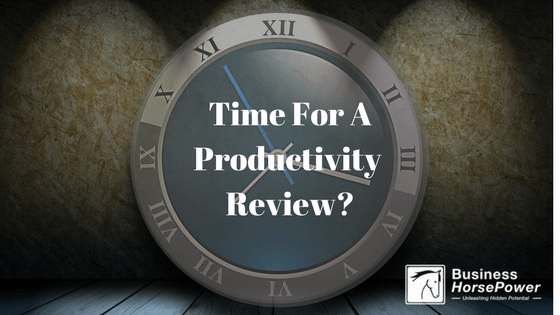
by Julia Felton | Jun 28, 2017
With the first six months of the year very nearly completed, are you on track to achieve all your goals for 2017? If not maybe its time for a productivity review to assess what you are really doing every day. Are you spending time on high value income producing activities everyday, or are you getting distracted by the loads of important and urgent tasks that come across your desk, and into your email box each day.
I’ve spent the first half of the year honing my productivity skills with a mentor and it has been time well invested. I now have a new approach to how I block and tackle my days. I’m now achieving more and also having more fun doing it. So here are some tips to get you back on track.
- Take stock of where you are. You need to know where you are right now and where you want to get to in order that you can figure out the next step. Just think about it. If you are in Paris and you have no idea of where you want to visit, it doesn’t matter what directions you are given, they won’t get you to where you wnat to go. However, if you are in Paris and know you want to visit the Eiffel Tower then with some good help and advice someone can show you where you are the range of options to get there. A mentor can do just the same for you in your business, showing the plan to help you achieve your results based on where you are right now.
- Keep track of your most important commitment—the one you make to yourself. Productivity guru David Allen, author of Getting Things Done, contends that commitments to yourself are qualitatively different than those you make to others because your conscious mind can essentially “lose track” of them. While your boss will remind you of your commitments to her, your mind doesn’t know your email address. What Allen calls your “mental RAM” will continue to expect those commitments to be fulfilled, but you may have forgotten about them amidst the clamour of your work life. The result is the worst kind of stress, because you feel the pressure but you can’t quite figure out where it’s coming from. In his most recent book, Ready for Anything: 52 Productivity Principles for Work and Life, Allen offers several effective tips for capturing these “open loops” and closing them, either by completing, canceling or renegotiating them.
- Practice saying “No.” Do you find that your work has bled almost seamlessly into your personal life? One of the answers to this problem is often the word, “No.” You have to acquire the skill to utter that magic word in order to create some boundary around your work and create the opportunity for personal relaxation and renewal. The key is to steadfastly turn down obligations unless they further your priorities.
- Invest in your health. This goes without saying, right? Actually, for most of us, it also goes without doing. Yet, apart from the obvious benefits of better health, increasing your physical well-being can yield tremendous benefits in terms of your productivity at work. In the view of Jim Loehr and Tony Schwartz, authors of The Power of Full Engagement, it is managing your energy—starting with your physical health, including diet, sleep and exercise—that is more important than managing time in improving your personal productivity.
- Protect your mornings. Author and motivational speaker Brian Tracy refers to the “magic hour” after you get up—a time to protect yourself from the news and other distractions and concentrate on your day: What you are going to accomplish and exactly how you are going to do it. Many experts report that most people are naturally more creative and energetic in the mornings, which is an argument for applying yourself to your most challenging tasks then and saving the routine housecleaning until later in the day, one of the notions at the heart of the Morgenstern’s Never Check Email in the Morning.
- Pick a system—any system—just pick one. How many different places do you squirrel away information? Email? Yellow pads? Daily planner? PDA? Post-it Notes stuck like a yellow halo around your computer screen? It might take a serious investment of time to sort through the options, but decide on one…and then use it. Each of the productivity experts referenced here, and the hundreds of others in the bookstore, will claim their system is the best. But most of them also acknowledge that any system that you actually use is going to be better than no system or the chaotic structure that so many of us have fallen into. As Allen puts it, in choosing an organiser, whether high-tech or a stack of 3×5 cards, go for “simplicity, speed and fun.”
- Fun? Wait, did you say “fun”? Another important tune-up is to get reconnected with what’s happening to your personal life. Maintaining your personal relationships, relaxing and—gasp!—having fun are critical to your mental health, which, in turn, affects your energy, creativity and productivity.
But the most important tip of all is to build regular review and reflection time into your calendar. There are countless ways you can improve your productivity, lower your stress and enhance your physical and emotional well-being. But they all require some focus, some thought and some energy. The key is to treat the process of personal renewal itself as a priority. To use Stephen Covey’s classic “maintenance” metaphor, think of this as “sharpening the saw.” Schedule it. Place it in the priority queue, assign time to it, and actually give it some of your attention. Your time will be well spent
Julia Felton (aka The Business Wrangler) is the founder of Business HorsePower. Business leaders, entrepreneurs and executives hire her to accelerate their business performance by harnessing the energy of their people to work more collaboratively together. By aligning purpose with actions the team achieves exponential results as everyone starts pulling in the same direction.
Julia believes that business is a force for good and through designing purpose-driven businesses that leverage the laws of nature, and the herd, you can create businesses founded on the principles of connection, collaboration and community that make a significant impact in the world.

by Julia Felton | Jun 21, 2017
If you want to get the best from your team you need to learn to connect, engage and communicate with them. Even if this isn’t your natural bent, you can learn to do this. In fact, the reason I’m writing this post today is because one of my clients said to me this week “Julia, one of the things I appreciate about you is that you’re so good at asking questions. I’m not. That’s just not how I’m wired.”
To which I responded, “Thanks for the compliment, but I’m not wired that way either.” Learning to use questions to lead isn’t a natural ability for most of us, it’s an acquired skill. And it’s not that hard to do on a skill level, it’s only hard on an implementation level. So, here are a few ideas to help you get started on unleashing your inner questioner.
1. Learn to see yourself as a developer of talent, not the boss. At the end of the day, most of us like to be tellers because we see ourselves as “the boss.” When we own the boss hat, most of us like to be in the teller role (I hired you. I pay you. Do what I tell you to do). And as long as we own that mindset, we’ll struggle with asking questions. However, if you can make the mental shift from boss to talent developer, you’ll begin to see your role completely differently (which is key because talent developers create leverage, whereas bosses don’t).
2. Make questioning your first response. I know this may feel pedantic, but when someone asks you a question, ask them a question back. Refuse to just give the answer (something that most of us who are male will always struggle with :-). Instead, when someone asks, “So, what do you think I should do?” throw it back to them, “First, tell me what you think you should do?” If they say, “I asked you first.” Just respond, “Well, how do you think I’d respond?” Return question for question. As hard as this is, don’t give the first answer. This was something I was challenged with when working in my corporate role, but asking questions helps team members become more resourceful and ultimately take more responsibility for their actions. In today’s world of mobile communication it is just too easy for team members to abdicate any responsibility and just ask their boss. But this does not help us develop leaders of the future.
3. Open your team conversations with questions. Instead of saying, “Pete, we have a problem here. And here’s what I want you to do.” Open the conversation with a wide open question. “Pete, as you know, we have a problem here. What do you think is creating it?” Or, “What’s your best thinking about how to solve this?” Or, “Do you have any ideas about how we can eliminate this in the next 30 days?”
Yes, there is an art to asking good questions (for example, wide open questions are better for creating independent thinkers), but what’s more important is that you embrace the principle that being a questioner is a better leadership choice than being a teller. Once you do that, you’ll acquire the skill set over time through trial and error. But you’ll never get there if you don’t embrace this concept as a core leadership practice.
So do you? Do you really believe that being a leader who leads through questioning is better than being a leader who leads by telling? I hope so because the choice you make will have profound consequences for you and your company for years to come. So, choose wisely! Remember,
“If you want to get the most from your people, then you need to draw the best that is in them—out of them.”
By the way, if you’re thinking, “But asking questions sure takes a lot more time than telling,” then you probably don’t own the idea that a leader isn’t a boss, a leader is a talent developer who leverages the time, talent, treasures, resources, intellectual property and connections of their people to produce a result.
Oh, and one last thought. This principle and practice holds true whether you are leading a two person team or a two thousand person team.
Go forth and ask better questions so that you can connect, engage and communicate.
Julia Felton (aka The Business Wrangler) is the founder of Business HorsePower. Business leaders, entrepreneurs and executives hire her to accelerate their business performance by harnessing the energy of their people to work more collaboratively together. By aligning purpose with actions the team achieves exponential results as everyone starts pulling in the same direction.
Julia believes that business is a force for good and through designing purpose-driven businesses that leverage the laws of nature, and the herd, you can create businesses founded on the principles of connection, collaboration and community that make a significant impact in the world.

by Julia Felton | Jun 14, 2017
“There’s no such thing as a self-made millionaire. Only TEAM-made millionaires”
In last week’s Wednesday Wisdom we discussed the different leadership positions and the fact that in the herd leadership is shared. A horse herd operates as a team and to my mind teamwork is the most effective way in business to create success. Being in business is tough and there is simply no way that you can do everything by yourself. Each of us has own our brilliance and working with team members enables you to focus on your brilliance whilst letting others do theirs. The net effect is that everyone is in a state called flow, which is the state of least resistance. Then business becomes easy and fun.
But how do you get the best out of team members and inspire them to give of their best to help your business grow and be successful.? The answer is to ask better questions. So are you a teller or a questioner?
In other words, when you’re working with your team members (or outsourcers) do you tend to tell them what to do or do you engage them in a conversation by asking questions?
If you’re like most entrepreneurial leaders, chances are you’re the former. If that’s true, then my question to you is “How’s that working for you?”
My guess is it’s not working out as great as you’d like it to. In fact, I find that most entrepreneurial leaders are pretty frustrated with the people they’re “leading.” See if any of the following statements ring true for you
- “They never do what I tell them to do!”
- “It always takes her ten times longer to do what I asked her to do. If she’d just listen to me, she could get it done in one tenth of the time it’s currently taking!”
- “I can’t understand why it’s taking him so long to do what I asked him to do.”
- “I can’t figure out why she just can’t follow my directions.”
- “I didn’t hire him to think. I hired him to do what I tell him to do.”
Ouch! And I fully understand those sentiments. As an entrepreneurial leader myself I understand why you want people to do what you want them to do in the way you want them to do it (after all, you are the BOSS, right? And it is YOUR company. And you do pay THE BILLS. And they do work for YOU, right?).
Furthermore, I get the whole driven part of the entrepreneurial personality. According to my Talent Dynamics profile I have lots of dynamo energy so, by personality, I like being a teller. I like saying, as chances are you do, “Here’s what I want you to do. Now, just go do it. No questions. No debate. Just get it done EXACTLY how I told you to do it.”
But, as you well know, that approach doesn’t produce the best results
The Problem With Being a Teller
What I learned, and hopefully you are as well, is that being a teller is a counterproductive leadership approach. Why? For a number of reasons. I’ll give you three.
- Telling doesn’t create buy in. As you know, people own what they help create, which, by definition means they don’t own what they don’t help create. So, if you or I say, “Billy, I want you to do X in Y way,” how much does he own that? Virtually nil. And if someone doesn’t own a task or project or process/procedure or event or strategy or tactic, the chances of them producing the best result will always be lower than if Billy is involved in creating the solution. Telling doesn’t work because it doesn’t create buy in or ownership.
Note: We’re not talking about following systems here. We’re talking about solving problems or creating something new.
- Telling doesn’t produce the kind of people you want/need. In other words, if you’re a teller, you’re NOT developing your people to be their best (whether that’s to be a better leader or problem solver or innovator or coach or process person, etc.). Or to put it another way, if you or I are always in the telling position, then we’re not creating independent thinkers. And if we’re not creating independent thinkers, then we’ll have to keep doing all the thinking—which leads to the third reason why you don’t want to be a teller.
- Telling doesn’t create leverage. If you or I still have to do all the thinking, then we’re not creating leverage. We’re simply creating more work for ourselves. We become the bottleneck to growth. If our people don’t own the task, then we have to invest more time in managing and leading the task. If our people aren’t really excited about a task or project, then more conflict will occur, which means we’ll have to invest more time. Or, if the only people we’re happy with are people who will just do what they’re told, then we’ll always put a lid on the quality of the kind of employee we can hire (which, again, kills leverage).
Any way you add it up, being a teller, just isn’t the smartest leadership choice you or I can make if we want to grow a fast growing business or organisation.
The Better Option
The better option, if you want to get the best from your team is to learn to connect, engage and communicate with them. Even if this isn’t your natural bent, you can learn to do this.
Next week I’ll be sharing my best tips on how to connect through using questions.
Julia Felton (aka The Business Wrangler) is the founder of Business HorsePower. Business leaders, entrepreneurs and executives hire her to accelerate their business performance by harnessing the energy of their people to work more collaboratively together. By aligning purpose with actions the team achieves exponential results as everyone starts pulling in the same direction.
Julia believes that business is a force for good and through designing purpose-driven businesses that leverage the laws of nature, and the herd, you can create businesses founded on the principles of connection, collaboration and community that make a significant impact in the world.


